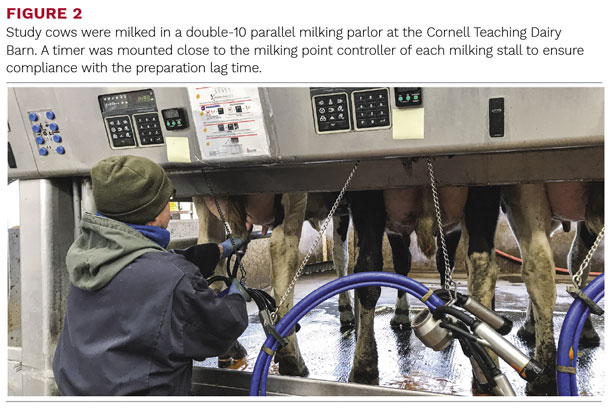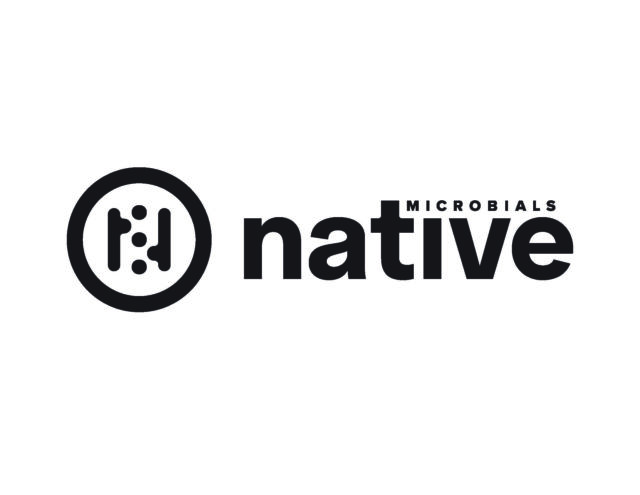By contrast, data on the most efficient milk harvesting process to fully benefit from recent accomplishments in animal genetics and nutrition is scarce. Specifically, there is a lack of information about the most efficient technique of premilking stimulation (i.e., forestripping). Consequently, more and more dairy producers reduce or eliminate the time spent on forestripping in an attempt to increase parlor throughput.
However, optimal premilking stimulation is paramount to activate the milk-ejection reflex and harvest the majority of the udder’s milk volume. Improper premilking stimulation is associated with decreased milk yield and milk flow. Due to an inverse relationship between milk flow and vacuum induced strain, improper stimulation may aggravate the impact of machine milking on the teat tissue condition.
These machine milking-induced teat tissue changes have negative health effects for the udder and diminish animal well-being, which besides antimicrobial use in food animals, has become a major public concern. The effect of forestripping on animal well-being and milking performance is not clearly established, although knowledge about its influence on teat tissue condition offers unique opportunities to help the industry develop milk harvesting techniques that result in improved animal well-being, udder health, and milk production.
A team of investigators from Quality Milk Production Services and PRO-DAIRY set out to study the possible impact on milk production, milk flow, unit-on time, and teat condition when the forestripping step is omitted. In a randomized trial, 130 Holstein cows milked three times per day were allocated into two groups. Premilking udder preparation for the treatment group consisted of: (1) predipping with one percent iodine, (2) sequential forestripping of three streams of milk per quarter, (3) wiping of teats, and (4) attachment of the milking unit. Premilking udder preparation for the control group was identical except that the forestripping step was omitted. The mean tactile stimulation durations were 16 seconds and seven seconds for the treatment and control group, respectively (Figures 1 and 2).


The time spent from first tactile stimulus (either forestripping or wiping of teats) to milking unit attachment was kept consistent at 90 seconds for both groups. After seven days, treatments were switched to increase the statistical power of the study. Data on two-minute milk yield (lbs/milking session), unit on time (s/milking session), time spent in low (< 2.2 lb/min) milk flow rate (s/milking session), and milk yield (lbs/milking session) were obtained with electronic on-farm milk meters. The occurrence or nonoccurrence of machine milking-induced teat tissue changes were assessed by visual and tactile inspection. We used generalized linear mixed models to study the effect of treatment on the outcome variables of interest.
The results for the milking characteristics are summarized in Figure 3.

We found that cows that were forestripped had higher two-minute milk yield (13.4 versus 12.3 lbs). The effect of treatment on milking unit on time was modified by parity, such that first-lactation animals had 15 seconds shorter milking unit on time when they received forestripping; whereas no meaningful differences between treatments were observed for cows in second and third or greater lactation. There was an interaction between treatment and milk yield for the outcome variable time spent in low milk flow rate such that the differences between treatments increased with decreasing milk yield.
For example, time spent in low milk flow rate for cows that were forestripped and received no forestripping, respectively, were 18 and 24 seconds for a milk yield of 22 lbs; and 13 and 15 seconds for a milk yield of 33 lbs. By contrast, differences in milk yield were not detected between the two treatments. The odds of teat tissue changes were lower for cows that received forestripping compared with those that were not forestripped [odds ratio (95 percent confidence interval) = 0.31 (0.22-0.42)]. We conclude that mere wiping of teats with a cloth towel for approximately seven seconds during premilking udder preparation does not provide sufficient tactile stimulation to elicit the cows’ maximum physiological milk ejection capacity as compared to 16 seconds of stimulation that includes forestripping.
This can aggravate the negative effects of mechanical forces on the teat tissue during machine milking, diminish animal well-being, and possibly impact udder health. Despite the lack of a positive effect on milk production, we therefore recommend a milking routine that includes forestripping. ![]()
Matthias Wieland, D.V.M., () is an Extension Associate with the Department of Population Medicine and Diagnostic Sciences, Cornell University College of Veterinary Medicine. Email Matthias Wieland. Rob Lynch, D.V.M., is a Dairy Herd Health and Management Specialist with Cornell CALS PRO-DAIRY. Email Rob Lynch. Daryl Nydam, D.V.M., is Faculty Director for the Atkinson Center for Sustainability, Department of Population Medicine and Diagnostics, Cornell University. Email Daryl Nydam.
This article appeared in PRO-DAIRY’s The Manager in July 2020. To learn more about Cornell CALS PRO-DAIRY program, visit PRO-DAIRY Cornell CALS.






